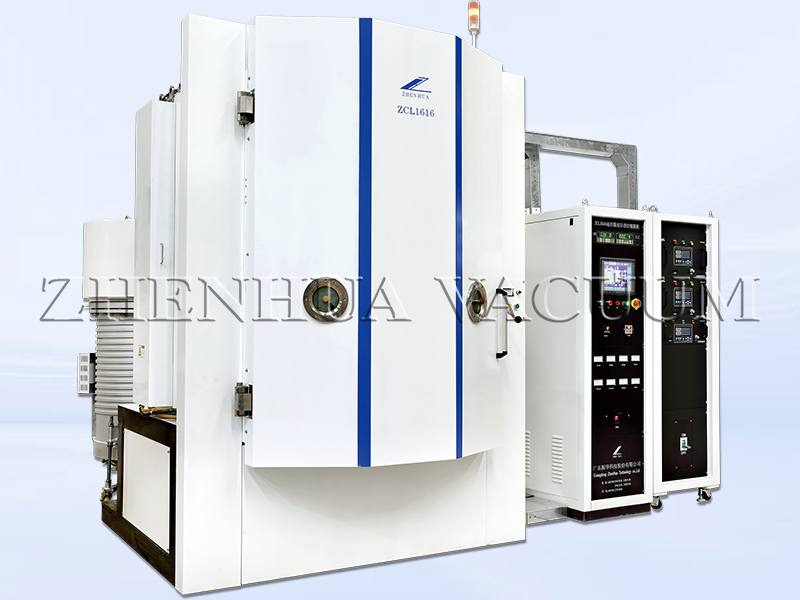Vacuum coating equipment is typically composed of several key components, each with its own specific function, that work in concert to achieve efficient, uniform film deposition. Below is a description of the main components and their functions:

Main Components
Vacuum chamber:
Function: Provides a low-pressure or high-vacuum environment to prevent the coating material from reacting with airborne impurities during evaporation or sputtering, ensuring the purity and quality of the film.
Structure: Usually made of high-strength, stainless steel or aluminum, the internal design takes into account airflow distribution and ease of substrate placement.
Vacuum pump system:
Function: Used to pump out the gas inside the vacuum chamber to achieve the required vacuum level.
Types: Including mechanical pumps (e.g. rotary vane pumps), turbomolecular pumps, diffusion pumps and ion pumps.
Evaporation source or sputtering source:
Function: heats and evaporates the coating material to form a vapor or plasma in a vacuum.
Types: including resistance heating source, electron beam evaporation source, magnetron sputtering source and laser evaporation source, etc.
Substrate holder and rotating mechanism:
Function: Holds the substrate and ensures uniform deposition of the coating material on the surface of the substrate by rotation or oscillation.
CONSTRUCTION: Typically includes adjustable clamps and rotating/oscillating mechanisms to accommodate substrates of different shapes and sizes.
Power supply and control system:
Function: Provides power to the evaporation source, sputtering source and other equipment, and controls parameters of the overall coating process such as temperature, vacuum and time.
Components: Includes power supplies, control panels, computerized control systems, and monitoring sensors.
Gas Supply System (for sputter coating equipment):
Function: Supplies inert gases (e.g., argon) or reactive gases (e.g., oxygen, nitrogen) to maintain a plasma or to participate in a chemical reaction to generate a specific thin film.
Components: Includes gas cylinders, flow controllers, and gas delivery piping.
Cooling System:
Function: cools the evaporation source, sputtering source and vacuum chamber to prevent overheating.
Types: include water cooling systems and air cooling systems, etc.
Monitoring and detection system:
Function: Real-time monitoring of key parameters in the coating process, such as film thickness, deposition rate, vacuum and temperature, to ensure coating quality.
Types: including quartz crystal microbalance, optical thickness monitor and residual gas analyzer, etc.
Protective devices:
Function: Ensures the safety of operators and equipment from hazards caused by high temperatures, high voltages or vacuum environments.
Components: Includes guards, emergency stop buttons and safety interlocks, etc.
Summarize.
Vacuum coating equipment realizes the process of depositing high-quality thin films through the synergistic work of these components. These machines play a vital role in the preparation of optical, electronic, decorative and functional thin films.
–This article is released by vacuum coating machine manufacturer Guangdong Zhenhua
Post time: Jul-23-2024

